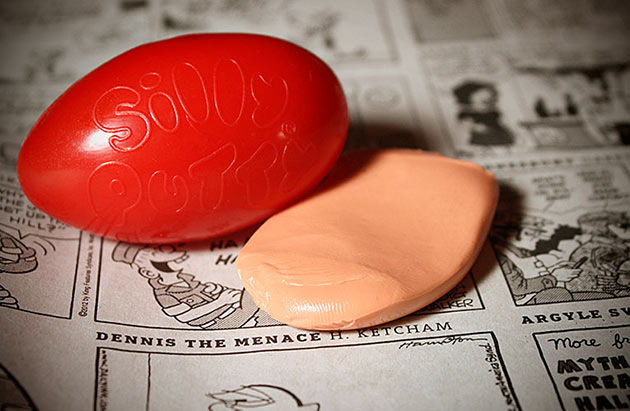Attention-deficit hyperactivity disorder (ADHD) is a class of behavioral disorders that often appears in young children as well as school-age kids, young adults and adults. People who suffer from ADHD experience various degrees of difficulty in paying attention in school or at home or work. As a result, ADHD sufferers often find that, even when they are concentrating on an object or task, they still find it difficult to pay attention. One of the common ADHD symptoms, especially amongst young children, is “fidgeting,” defined as “the act of behaving or moving nervously or restlessly.” Impaired brain motor control centers are often seen as the cause of this type of hyperactive behavior. Unfortunately, children who have ADHD and exhibit a fidgeting impulse are often seen as being “difficult” or having behavioral problems.
According to “The Inspired Treehouse,” a website offering physical games for kids, a “fidget toy” is “an object that can be provided to a child to regulate a need for movement and touch… A fidget toy helps a child filter out all of the excess sensory information in his/her surroundings and within his/her own body that might be distracting and points all of the child’s energy and focus to the toy in their hands.”
ADHD children often react to the problem of under-stimulation through self-correcting behaviors such as fidgeting, squirming, bouncing, chewing, rocking and a variety of other physical activities aimed at creating constant movement.
Why ADHD Children Fidget
Fidgeting is not always a bad thing for an ADHD child. Fidgeting is, in fact, a natural, healthy way for kids to stimulate themselves in order to increase mental focus. External movement increases stimulation, and increased stimulation often creates an improvement in focus and attention. Parents, caregivers and teachers of ADHD children can work with a child’s “fidgeting tendency” and other personality traits to make learning and school more productive and less frustrating.
Fidget Objects
“Fidget toys,” also known as “fidgets,” have been shown to help some ADHD children re-establish focus and reduce frustration levels. But not all “fidgets” are created equal. The best “fidgets” are inexpensive, small, sensory objects that feel interesting to the touch and are fun to play with while not posing a choking hazard. Important qualities to look for when selecting a “fidget object” are:
- Quiet: A fidget shouldn’t disturb other children or adults in the room;
- Handy: A fidget should be small and non-obtrusive. There are many great fidgets that are small enough to fit in a child’s hand; and
- Non-visual: Select an object the child will not have to look at to operate so they won’t be distracted during lessons or while doing homework.
To find 45 ideas for classroom-friendly fidget toys, check out the Therapy Focus website for more information or goto National Autism Resources, to find a wide variety of available fidget toys.
As an alternative to purchasing fidget toys, it’s easy and fun to work with the child to make the toys at home. A Ziploc TM bag filled with Play-Doh TM or Silly Putty TM works great. One small balloon placed inside another balloon and filled with sand using a small funnel is another excellent option.
Rather than punishing your ADHD child for doodling, wiggling, fidgeting, chewing or humming while doing homework, try encouraging the behavior. The fact is that ADHD kids learn better while staying in motion and science has proven that multi-sensory stimulation improves attention and retention.
Learn from your ADHD Child
Remember, when planning learning experiences for ADHD children, an activity that works for one child may not work for another. Observe your child and watch their behavior to learn what works best for them. If your child has ADHD, don’t force them to sit at a desk or table to do their homework. If they need to stand, pace, or move around, let them. Quiz them or discuss their lessons while going for a walk or playing a game of catch. Even something as simple as a change of scenery can help create focus and calm. Working with your child’s gifts rather than focusing on his or her problems will make it easier for both of you to achieve success.
